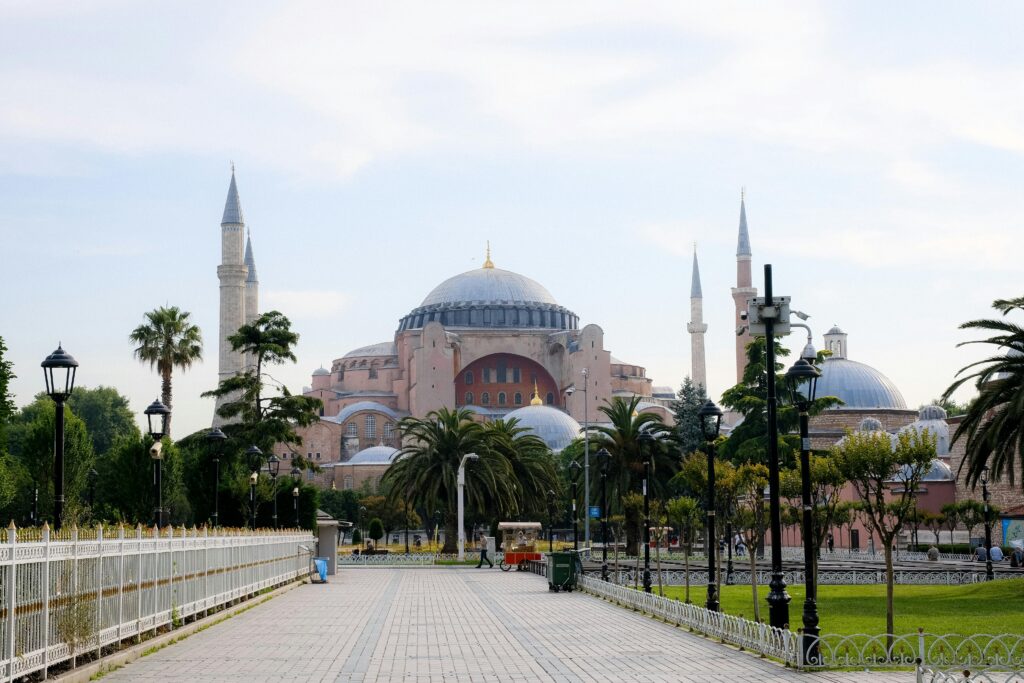The Story of Islam: From Desert Origins to Global Influence
Islam shapes the lives of nearly two billion people today, reaching every continent and culture. Its story began in the heart of Arabia, transforming not only the region but leaving an imprint that continues across centuries and borders. Understanding Islam’s history is more than tracing a timeline. It’s exploring the ideas, journeys, and moments that turned a small community into a worldwide faith.
The Birth of Islam in Seventh-Century Arabia
Centuries ago, the city of Mecca stood as an oasis for trade and tradition. Picture a lively market square surrounded by desert, where tribes traded goods and ideas beneath the hot sun. Life in the 600s CE was shaped by family clans, shifting alliances, and long-standing customs.
Most people in Mecca followed ancient polytheistic beliefs, worshiping many gods and spirits. They met at the Kaaba, a stone building filled with images and symbols from across the region. Wealth, honor, and poetic skill guided their code. This world would soon be changed by a message that asked for unity, compassion, and faith in one God.
The Life of Muhammad and the First Revelations
Muhammad was born into the Quraysh tribe, known for its standing in Mecca. Orphaned young, he earned a reputation for honesty, earning the nickname “the trustworthy.” He worked as a merchant, respected by his peers.
At age 40, Muhammad began receiving messages while meditating in a quiet cave outside town. These revelations, which he said came from God (Allah) through the angel Gabriel, urged people toward kindness, charity, and belief in one God. When Muhammad shared these teachings, Mecca’s leaders quickly pushed back, fearing the loss of their power and old ways. Yet, his words resonated with many—especially the poor and overlooked.
Key Events: The Hijra and Medina
Years of tension made life dangerous for Muhammad and his followers. In 622 CE, with threats growing, he and his community left Mecca for Yathrib, later known as Medina. This move, called the Hijra, marked the beginning of the Islamic calendar and a new chapter for Islam.
In Medina, Muhammad helped unite warring tribes and brought people together under the banner of faith and fairness. The first Muslim community grew, guided by new rules for prayer, family, and society. The Hijra wasn’t just a journey, it was a new identity.
Growth and Spread of Islam
After Muhammad’s death in 632 CE, Islam could have faded. Instead, it surged onward. His close companions, called caliphs, led with a mix of unity and determination. They spread the faith through trade, letters, and sometimes battles. Soon, a movement born in the desert reached far-off mountains and cities.
The Caliphates: Leading and Defining the Faith
The first four caliphs, also called the “Rightly Guided,” steered the Muslim community through challenges. They faced tough questions: How should Muslims pray and live? Who should lead? These debates split the community but also made it stronger, helping it adapt as it grew from villages to cities.
Expansion into New Lands
Within a century, Muslim armies and traders moved into places like North Africa, Persia, and Spain. People embraced Islam for many reasons—some found comfort in its teachings, others saw opportunity in joining a growing community. It became common to speak Arabic, study new sciences, and mix local traditions with Islamic values.
Islam’s Legacy in the Modern Era
Today, Islam stands as both spiritual path and source of strength for communities from Jakarta to Casablanca to Chicago. It inspires millions to prayer and reflection, while also guiding daily choices about food, charity, and fairness.
Faith and Culture in Action
Islamic culture pulses through music, architecture, and art—think of sweeping domes, calligraphic scripts, and geometric tiles. Muslim scholars preserved and expanded ancient knowledge, making discoveries in medicine and math that shaped the whole world.
The spirit of charity, social justice, and family still leads many Muslims today. Mosques, bustling markets, and quiet homes echo the recitations of the Qur’an and centuries-old traditions. Read More
Conclusion
Islam’s story began in the sand and stone of Arabia but grew into a faith spanning oceans and centuries. Its message of oneness, community, and hope continues to shape lives today. From humble beginnings, Islam’s path turned into a journey traveled by millions, carrying its wisdom, teachings, and spirit into the future.

